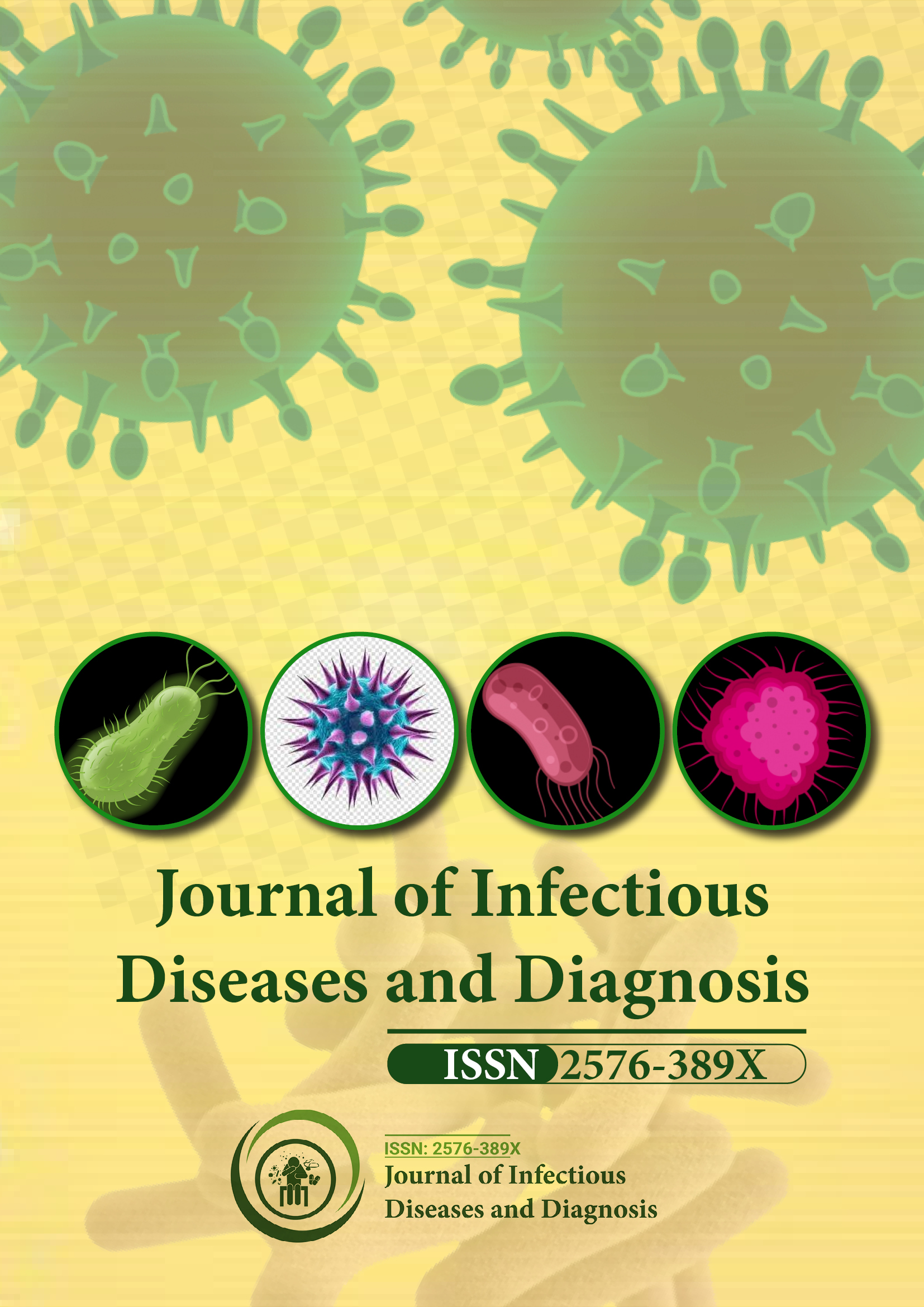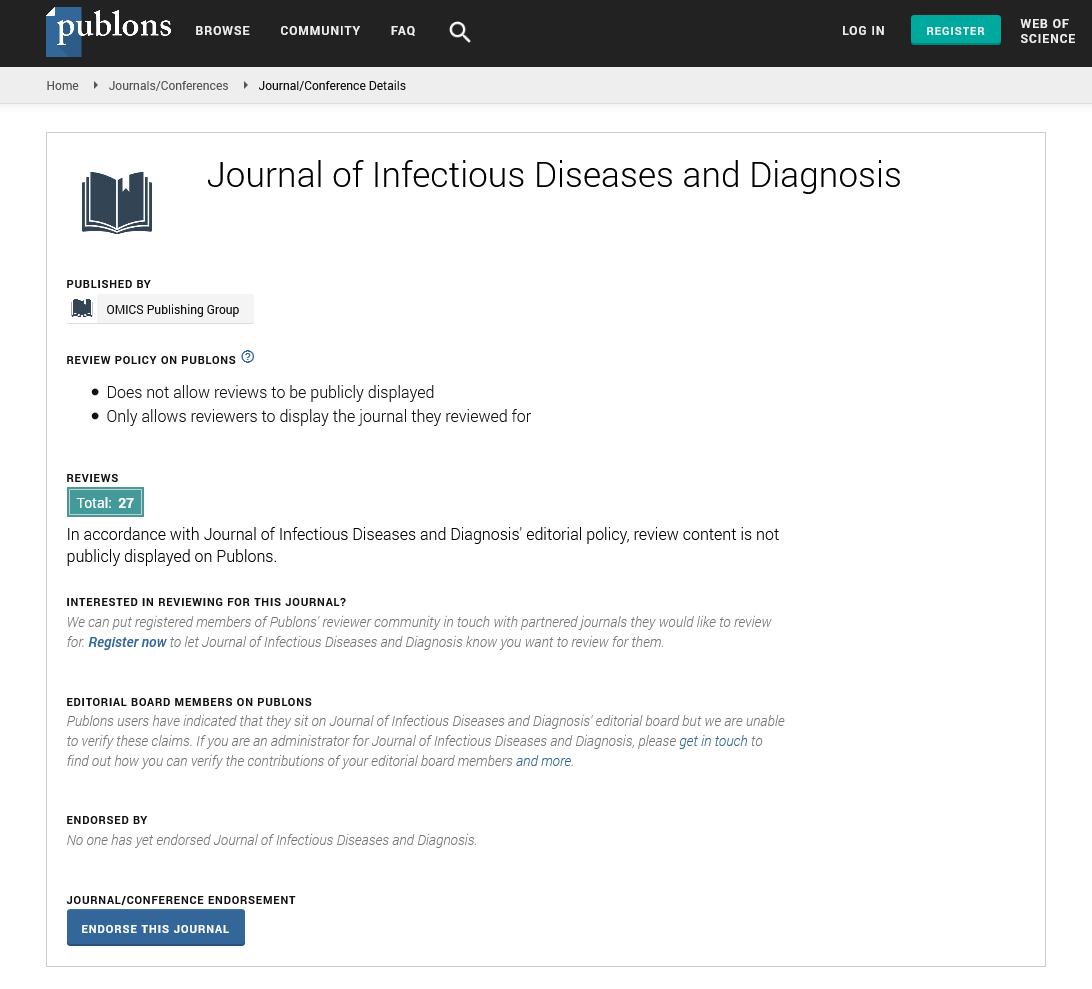Indexed In
- RefSeek
- Hamdard University
- EBSCO A-Z
- Publons
- Euro Pub
- Google Scholar
Useful Links
Share This Page
Journal Flyer

Open Access Journals
- Agri and Aquaculture
- Biochemistry
- Bioinformatics & Systems Biology
- Business & Management
- Chemistry
- Clinical Sciences
- Engineering
- Food & Nutrition
- General Science
- Genetics & Molecular Biology
- Immunology & Microbiology
- Medical Sciences
- Neuroscience & Psychology
- Nursing & Health Care
- Pharmaceutical Sciences
Commentry - (2021) Volume 6, Issue 2
Mathematical Modelling of Infectious Diseases to Predict and Control Epidemic
Ahaneku Iherue Osuji*Received: 08-Jul-2021 Published: 29-Jul-2021, DOI: 10.37421/2576-389X.2021.6.154
Description
Mathematical models can forecast the progression of infectious diseases to predict the likely outcome of an epidemic and aid in the development of public health measures. Models use basic assumptions or collected facts, as well as mathematics, to determine parameters for various infectious diseases, which are then used to calculate the consequences of various treatments, such as mass vaccination programs. Modeling can assist in determining which interventions to avoid and which to try, as well as anticipate future growth patterns, among other things.
Infectious disease modeling is a tool that has been used to investigate the mechanisms by which infections spread, predict the future course of an outbreak, and evaluate control strategies. Bernoulli, a physician by training, devised a mathematical model to defend the practice of smallpox vaccination. According to the calculations from this model, widespread smallpox vaccination would improve life expectancy from 26 years 7 months to 29 years 9 months. The work of Daniel Bernoulli predates our understanding of germ theory. In the early 20th century, William Hamer and Ronald Ross applied the law of mass action to explain epidemic behavior.
The compartmental model first appeared in the 1920s. The epidemic models Kermack–McKendrick (1927) and Reed–Frost (1928) both depict the interaction between susceptible, infected, and immune individuals in a community. The Kermack– McKendrick epidemic model was successful in forecasting outbreak behavior that was extremely similar to that seen in many previously documented epidemics. Agent-based models (ABMs) have recently been utilized to replace simpler compartmental models. Epidemiological ABMs, for example, have been used to guide public health (non-pharmaceutical) strategies to combat SARS-CoV-2 spread. Despite its complexity and high processing requirements, epidemiological ABMs have been criticized for simplifying and unrealistic assumptions. Even yet, when ABMs are calibrated properly, they can be valuable in informing judgments on mitigation and suppression measures.
Assumptions
Models are only as good as the assumptions that underpin them. If a model's predictions don't match the data, but the math is valid, the model's basic assumptions must be changed in order for it to be useful. Rectangular and stationary age distribution, i.e., everyone in the population lives to age L and then dies, with the same number of people in the population at each age (up to L). This is frequently well-justified in industrialized countries, where infant mortality is low and a large proportion of the population lives to the age of retirement.
Types of epidemic models
Stochastic: Being or possessing a random variable is referred to as "stochastic." A stochastic model is a tool that allows for random fluctuation in one or more inputs across time to estimate probability distributions of future outcomes. Stochastic models are based on chance changes in exposure risk, disease dynamics, and other illness dynamics. Stochastic approaches can be used to determine disease distribution at the statistical agent level in small or large populations.
Deterministic: Deterministic or compartmental mathematical models are frequently utilized when dealing with huge populations, such as in the case of tuberculosis. Individuals in the population are divided into subgroups or compartments in a deterministic model, each representing a particular stage of the epidemic. The model is formulated using differential equations since the transition rates from one class to another are technically stated as derivatives. It is necessary to assume that the population size in a compartment is differentiable over time and that the epidemic process is deterministic when developing such models. Rather than generating a single prediction, models have the advantage of looking at numerous outcomes at the same time. In previous pandemics, such as SARS, Swine Flu, MERS, and Ebola, models have demonstrated a high degree of accuracy.
Citation: Osuji AI (2021) Mathematical Modelling of Infectious Diseases to Predict and Control Epidemic. J Infect Dis Diagn.6:154.
Copyright: © 2021 Osuji AI. This is an open-access article distributed under the terms of the Creative Commons Attribution License, which permits unrestricted use, distribution, and reproduction in any medium, provided the original author and source are credited.

